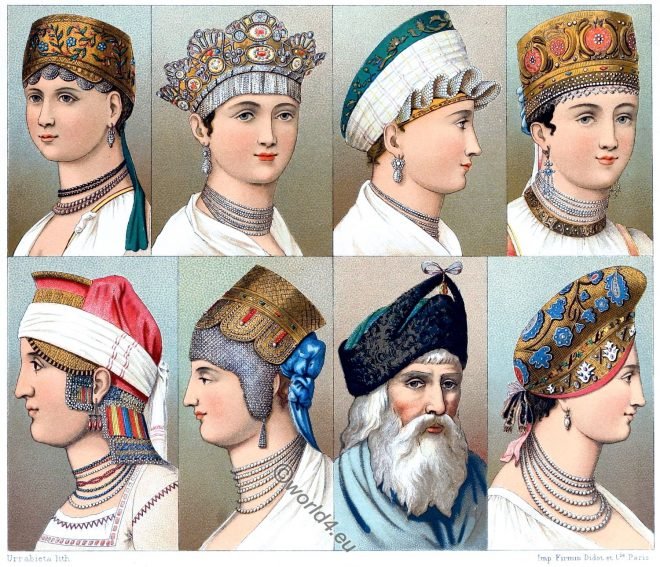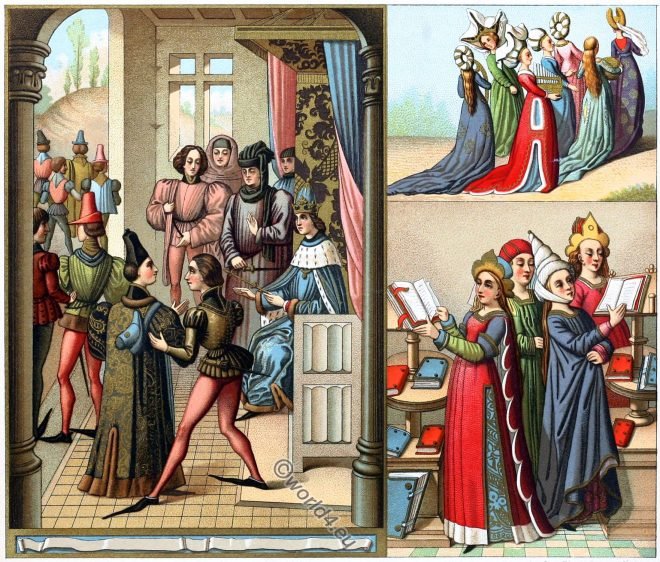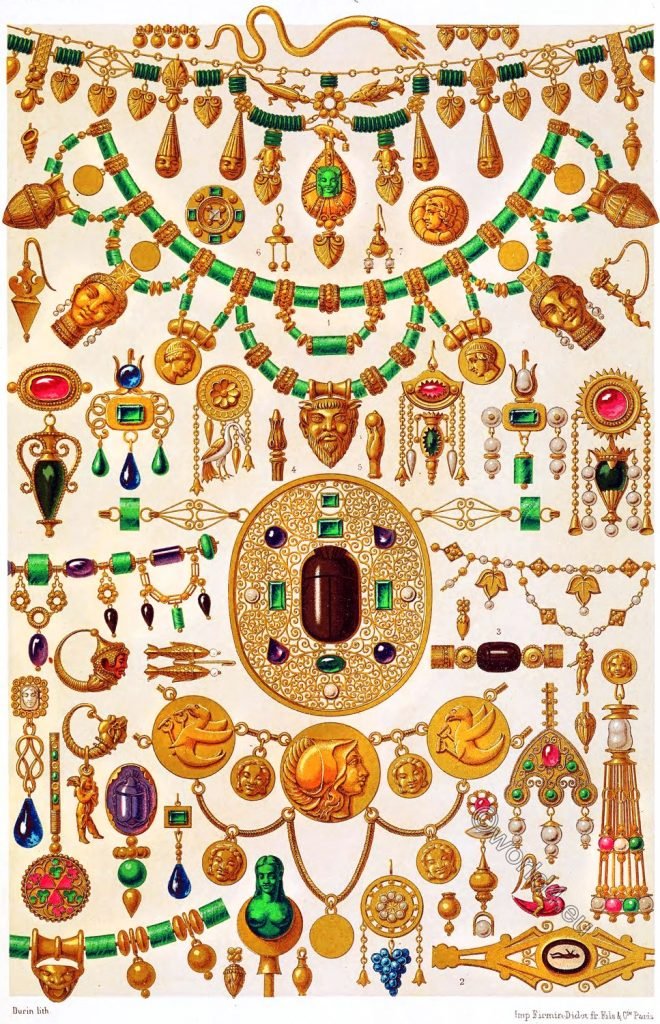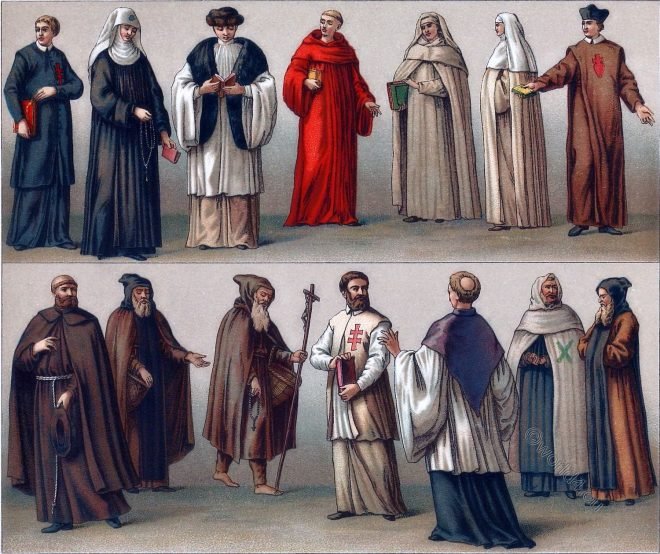Russia. Popular hairstyles. The traditional costume of Russian women especially the Kokoshnik (Russian: Коко́шник) has survived all innovations of fashion.
Tag: Auguste Racinet
The Costume History in Chronological Development by Auguste Racinet. Edited by Adolf Rosenberg. Berlin 1888.
Greece. Women after the figures from Tanagra and Asia Minor.
The small terracotta figures from Tanagra almost without exception represent noble women who corresponded to the ideal of beauty and the fashion of that time.
Greco-Roman Antiquities. Pompeian style. Decorative Architecture.
THE purely decorative architecture, which we find represented on the inner walls of the apartments in Herculaneum and Pompeii, seems to belong less to the domain of reality than to that of fancy.
A princely gathering. Middle Ages France 14th and 15th century.
A doctor of rights. Women’s costumes. A princely gathering. At that time, people looked less at wealth than at the number of costumes.
War costumes in the Middle Ages. Flags, banners, standards.
War costumes of the Middle ages. France 12th, 13th and 14th centuries. Weapons from the 12th to 15th centuries. Armor, weapons, flags, banners, standards.
Etruscan Art. Jewels. Polychromatic ornament by Auguste Racinet.
Civilization of ancient Italy. The Etruscans, also obsolete Etrurians, were an ancient people in Etruria who lived in the northern central Italy in the area of today’s regions Tuscany, Umbria and Lazio and called themselves Rasenna according to Dionysios of Halikarnassos.
The Togatus and the Roman ladies of the imperial period.
The citizens’ costume of the Romans. The Togatus. The Roman toga of the imperial period. The different types. The drapery. The stola, the pallium or the palla of the women.
Costumes of the spiritual orders. 10th to 18th century.
Monastic habit of spiritual orders from Poland, Germany and Flanders from the 10th to the 18th century.
Assyrian and Persian Art. Examples of Decoration, Ornamentation.
Assyrian and Persian Art of Nineveh and Persepolis.
The costumes of the aristocracy. The kings of fashion. France 17th century.
The aristocracy’s costumes. Louis XIV in the fashion of 1660 and 1670. The fashion of long hair. The Rhine Count’s trousers. The court of Versailles.










